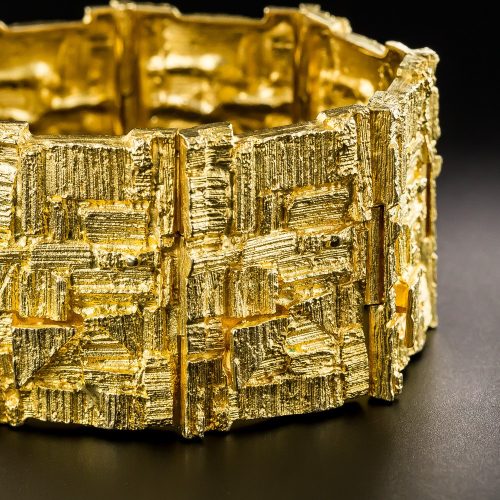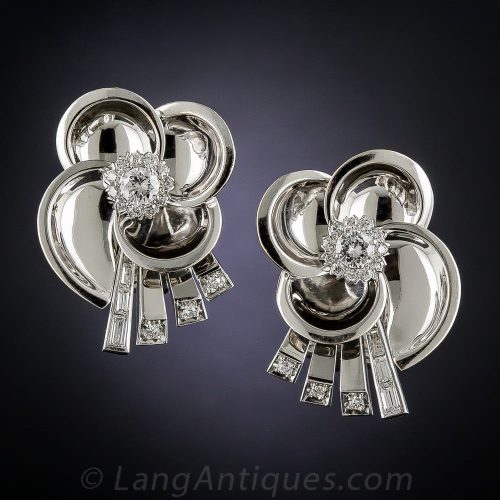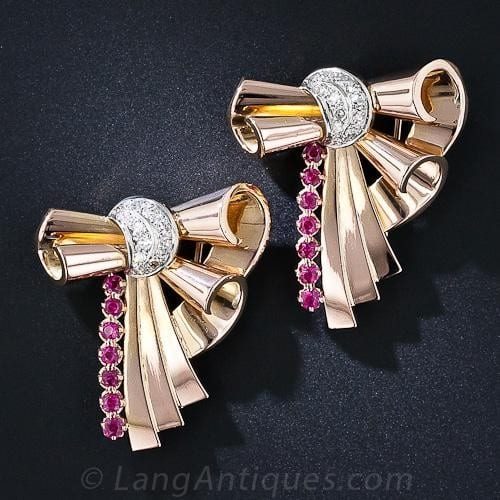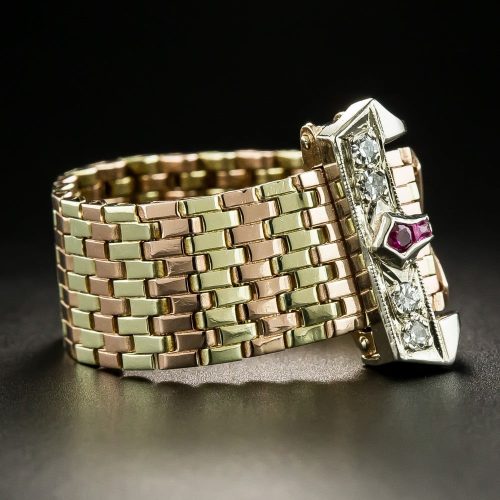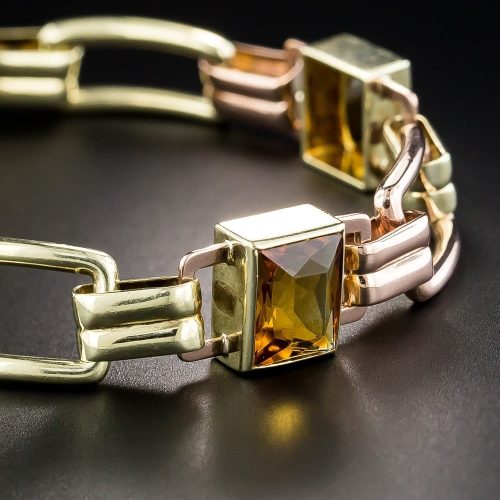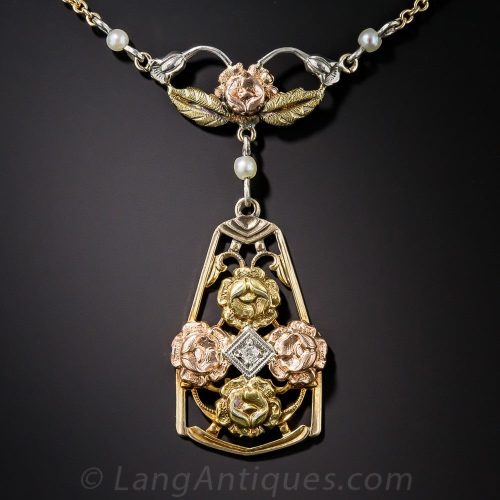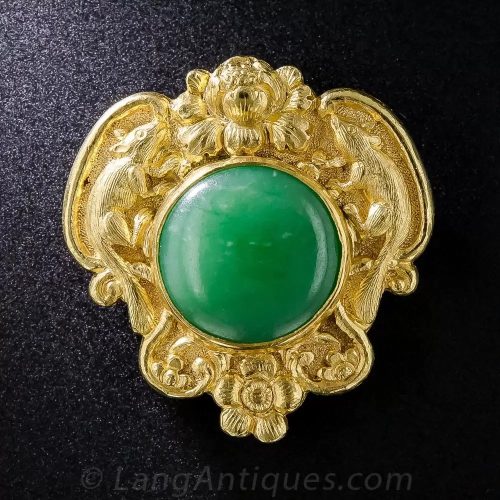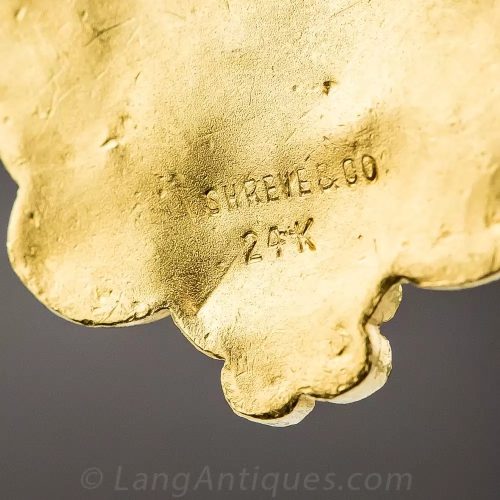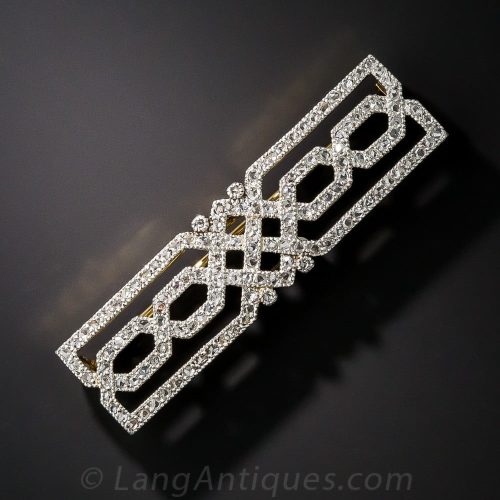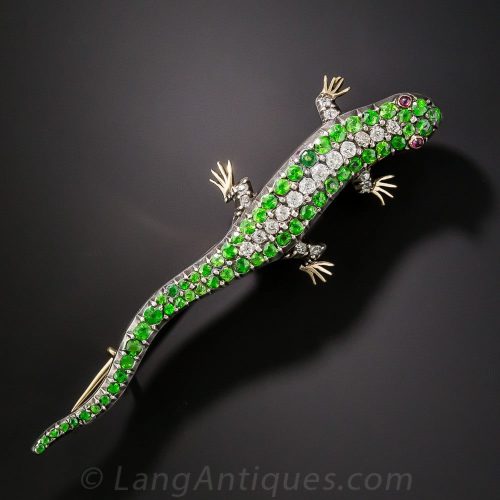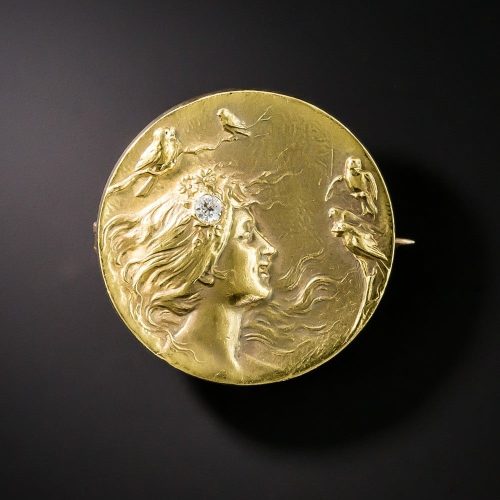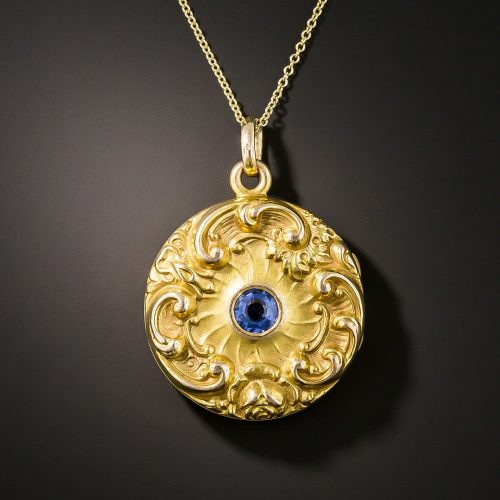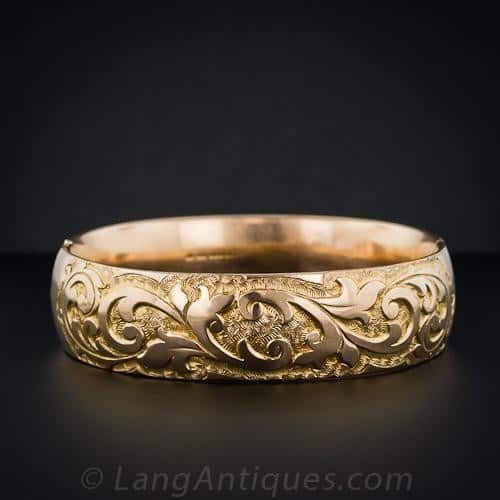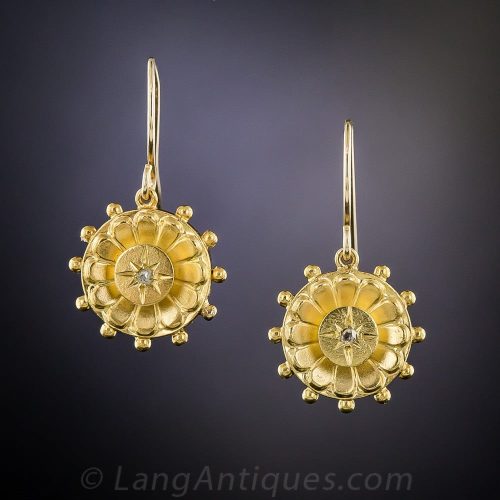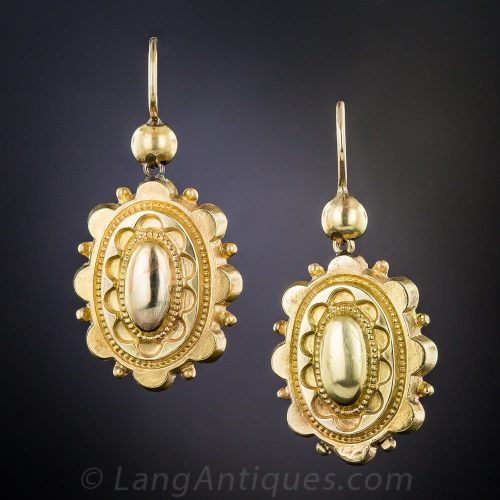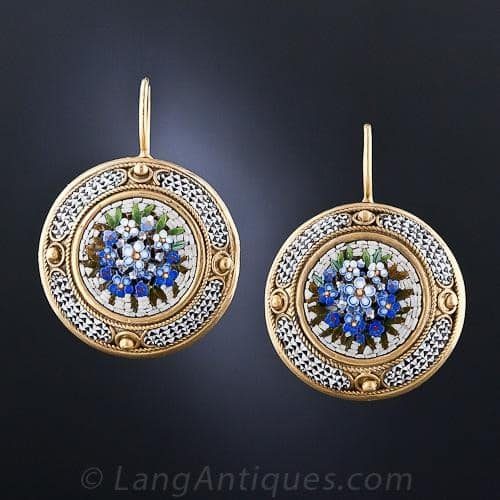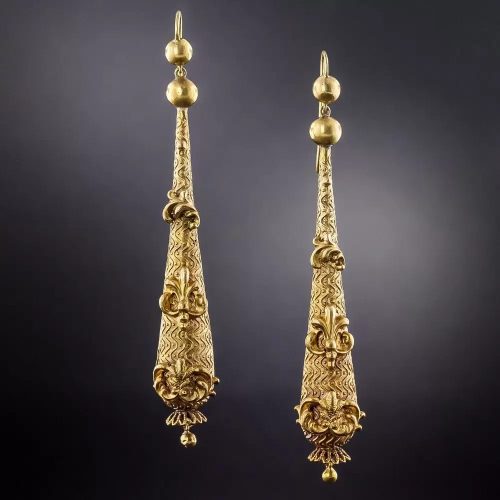Gold Alloy Colors
Two or more elemental metals mixed to form a homogeneous mass are an alloy. Sometimes metals are alloyed with a non-metal such as carbon. The newly formed metal is usually harder, more durable, a different color and less malleable than the original components. Precious metal alloys remain precious as long as the precious metal dominates the mix and it is kept in certain proportions.
Yellow Gold
Yellow gold is the most popular alloy of gold. Pure gold is very soft and very difficult to work into jewelry. Alloys can be added to yellow gold to enhance the yellow hue and create a harder, more workable alloy. Typical yellow gold alloys are a mixture of gold, silver, copper and sometimes zinc.
White Gold
White gold was invented in the 19th century by alloying gold with palladium. It became commercially available as of 1912 in Pforzheim, Germany and gained popularity in the mid-1920s as a low-cost substitute for platinum. It is an alloy of gold with copper, zinc, and nickel. In more recent times the nickel in this alloy is often been replaced by a member of the platinum family due to the prevalence of nickel allergies.
Rose Gold
Rose gold is a gold alloy displaying a reddish color. This color comes from high amounts of copper in the alloy. 18K Rose gold usually contains 25% copper and 75% gold (note, these are weight percentages, not volume percentages!).
Blue Gold
Blue Gold is an alloy of 25% arsenic or iron with gold to create a bluish color. Rarely used in jewelry, but sometimes found in “gold á quatre couleurs.
Tricolor Gold
Tricolor gold is the use of three colors of gold in jewelry fabrication. Usually, this is a combination of yellow, white and rose or green gold.
Gold à Quatre Couleurs
Gold à quatre couleurs refers to the combination of four distinct shades of gold alloy used in a single jewelry item. The colors are inlaid and soldered together to create a harmonious design. The combination of green, red, white and blue gold was the mixture most commonly utilized for jewelry design. Although the process was discovered earlier, the technique didn’t really gain in popularity until c.1750.
Gold Alloy Names
Coin Gold
Coin gold in the United States was an alloy of 9 parts gold, and 1 part copper.
Crown Gold
Crown gold is an English term to describe an 18 karat gold alloy.
Drittel Gold
Drittel gold (from German: drittel = 1/3) is an 8 karat gold alloy.
Fine Gold
Fine gold is another way of saying pure gold.
Hera Gold
Hera gold is a German name for a 10 karat gold alloy.
Jou-Jou Or
Jou-jou or (from French: “toy gold”) is a 6 karat gold alloy.
Bluite
Bluite was the trade name of an 18k white gold alloy marketed by Goldfarb & Friedberg, Inc. of New York. Their claim was that it was the “…nearest color to Platinum yet attained.”
Pistol Gold
Pistol gold is a gold alloy with 895/1000 parts of gold.
Karat Gold
Karat gold is the designation of fineness in an alloy of gold that is never less than 10 karat. It is expressed as the fineness followed by karat gold or just K. Example 14K.
Plumb Gold
Plumb gold is an alloy that tests to be the same fineness as the marking on the item, within a very small tolerance.
Solid Gold
Solid gold refers to 24 karat gold, or fine/pure gold. In 1967 the Federal Trade Commission approved the use of the term solid gold for items that are not hollow and are made of gold alloys. These articles must have a fineness of at least 10k.
Tumbaga
Tumbaga was used in pre-Columbian times from Mesoamerica to Peru and Chile as a generic term for any combination of gold and copper. It could range from 95% copper to 95% gold, although tumbaga or guanin gold was usually made by adding 10 to 30% copper to gold. Tumbaga usually contains 5 to 10% silver as well, which occurred naturally in the gold and wasn’t intentionally added.
Gold Plating and Bonding
À la Mercure
À la mercure is a French term to describe fire gilding through the use of a mercury/gold amalgam. The pure gold forms an amalgam with the mercury and is “painted” on an object, after which the item is fired with an open flame or in a furnace, vaporizing the mercury and leaving behind a layer of pure gold. This highly toxic method of gilding has gone out of use and is only applied when an item is in need of restoration. Often a special permit is required to execute this type of gilding.
- Alternative names: mercury gilding, fire gilding.
Gold Plate
Items that are gold-plated are coated with gold by the processes that produce gold-filled or rolled gold plate.
Gold Electroform
A very lightweight item is imbued with a heavy appearance through this technique in which a negative mold is put into a special silver or gold bath. Through the use of electricity, the metal builds up on the mold forming the object. Sometimes the metal is deposited on a leaf or other natural item or a wax model and, after covering the model in gold, the model is dissolved.
Gold Electroplate
Electroplating involves coating one metal with another through the use of a chemical bath and electric current. The electric current flows through the chemical solution from an anode (a piece of coating metal) to the item to be coated (cathode). Gold electroplate must be a minimum of 7 millionths of an inch of fine gold. When the coating is less than 24 karat the thickness must be proportionately higher.
Karat Clad
Karat Clad is a registered trade name for heavy gold electroplate of at least 100 microns thick and meeting Federal Trade Commission regulations.
Vermeil
Vermeil refers to a heavy plating of karat gold over sterling silver. Historically it was a chemical coloring applied to mercury-gilded objects to produce a red or yellow color.
From the FTC guides:
An industry product may be described or marked as “vermeil” if it consists of a base of sterling silver coated or plated on all significant surfaces with gold, or gold alloy of not less than 10 karat fineness, that is of substantial thickness and a minimum thickness throughout equivalent to two and one half (2 1/2) microns (or approximately 100/1,000,000ths of an inch) of fine gold.
Silver-Topped Gold
Silver-topped gold was an innovation by English jeweler James Cox, c. 1767 – the middle of the Georgian Era – which allowed silver to be backed by gold. Prior to this, gems being set in white metal were set in silver only. If the jewelry was not cleaned constantly, silver tarnish, rubbing directly onto skin, could leave marks or stain fabric. Gold does not oxidize and therefore leaves no discoloration on skin or clothing. Since the use of white metal was desirable for gem mounting, silver remained in use for jewelry with the addition of the gold backing. This process continued to be popular until the late eighteenth century.
Platinum-Topped Gold
As the technology was developed to make it possible to use platinum in jewelry, it too was added to the top of yellow gold in the same manner as silver. Since Platinum does not oxidize like silver and is in no danger of discoloring skin or clothing, the gold backing was eventually eliminated and jewelry made purely of platinum took its place.
Gold Leaf
Gold leaf is the result of the ancient art of gold beating whereby an ingot of gold is reduced by a rolling mill to 1/800 of an inch in thickness forming a ribbon of gold. This ribbon is separated into 1-inch lengths, placed on a mold and beaten with a 16-pound hammer. The gold is cut and beaten many times until it is extremely thin. The resulting sheets of gold are used to decorate objects, furniture, walls, paintings, sculpture, etc.
Gold Wash
Gold wash refers to a gilded layer with a thickness of less than 0.2 microns.
Gilt
Gilt is a base metal that has an extremely thin coating of gold deposited chemically or electrically (a process known as gilding) to give an inexpensive item the look of gold.
Roman Gold
Roman gold is a technique that employs a matting or frosting process followed by electroplating with pure gold. This results in a soft rich yellow without polishing.
Sheet Gold
Sheet gold has been used since ancient history. Most ancient golden jewelry started off as a hammered sheet of gold. These sheets could then be cut into desired shapes or rolled up into hollow tubes. Paper-thin sheets were often decorated with repoussé. Sheet gold could be sawn, hammered and bent into figures. With the invention of the rolling mill, sheets of gold were much easier to be obtained. Gold could be fed in between two rollers rotating in opposite directions so that a flat, even sheet of gold would be produced.
Gold Filled
A mechanical process that bonds a layer or layers of gold onto a base metal object. This can be done by brazing, soldering, welding, etc. The plating must be at least 1/20th of the weight of the metal in the entire item. Items produced in this manner are sometimes marked GF and if so marked the karat and quality must also be marked.
In January of 1934, a standard was instituted with regard to Gold Filled and Rolled Gold Plate. The U.S. Commercial Standard No. CS47-34 states:
The quality mark “Gold Filled” and/or “Rolled Gold Plate” shall refer to articles made of base metal, upon one or more sides or surfaces of which base metal there is affixed by soldering, brazing, welding, or other mechanical means, a sheet or sheets or shell of karat gold, produced by alloying fine gold with other metals, said sheet or
sheets or shell of gold being rolled, drawn, or pressed to the marked weight ratio before uniting with the base metal.
Rolled Gold Plate
Rolled gold plate is produced through a rolling process, applying extreme pressure with repeated application, bonding a layer or layers of karat gold to a supporting base metal. The applied karat gold must be a minimum of 10K fineness. The total karat gold covering is less than 1/20th of the total weight. This process ensures that the quality and quantity of gold are strictly controlled. Goods produced in this manner are sometimes marked RGP and if so marked must also state the karat and quantity must also be marked. Patented in 1817 in England the process facilitated what we now know as the fashion or costume jewelry industry. During the Victorian Era sheets of rolled gold plate were cut or stamped into jewelry items. Gold-filled is the term used when there is a heavier coating of gold applied using other methods,
Doublé d’Or
Doublé d’or is the French term for rolled gold plate. Doublé became a synonym for “plated” or plaqué. A gold alloy, whose thickness and fineness are fixed by law, was rolled onto a base metal. Pocket watch cases were often made using this process.
American Doublé
American doublé is a gilded surface over a tombak base.
Walz Gold
Walz gold is a German term for doublé articles.
Gold Smudge
A gold smudge is a colored smudge, left by jewelry or another metallic object, on the skin of the wearer. Although precious metals are usually non-reactive, in rare cases they may react with the environment. Usually, these special cases involve chemical reactions between the skin of the wearer and the metal, or the alloy, as is sometimes the case during pregnancy or with people who are allergic to that metal. Cosmetics, detergents, pollution and other such factors can also be culprits in causing “gold smudge”.
Gold Imitations
Pinchbeck
Pinchbeck is an alloy of copper and zinc (approximately 17% zinc and 83% copper) invented circa 1720 by Christopher Pinchbeck. It looked like gold but was much lighter which made it very popular for chatelaines, buckles, snuff boxes and watch cases. In addition, pinchbeck was used extensively in the manufacture of costume jewelry. One major benefit is that it stayed unoxidized for a fairly long time retaining a shiny gold appearance. Pinchbeck was eventually replaced by rolled gold and 9K gold.
Regaladium
Regaladium is a brand name used by Sebco, Inc. in Indianapolis to refer to an alloy of several metals used as a substitute for karat gold
in the class rings produced by the company ArtCarved.
Ultrium
Ultrium is a brand name for an alloy of metals substituted for karat gold by the Herff Jones Co. in Indianapolis.
